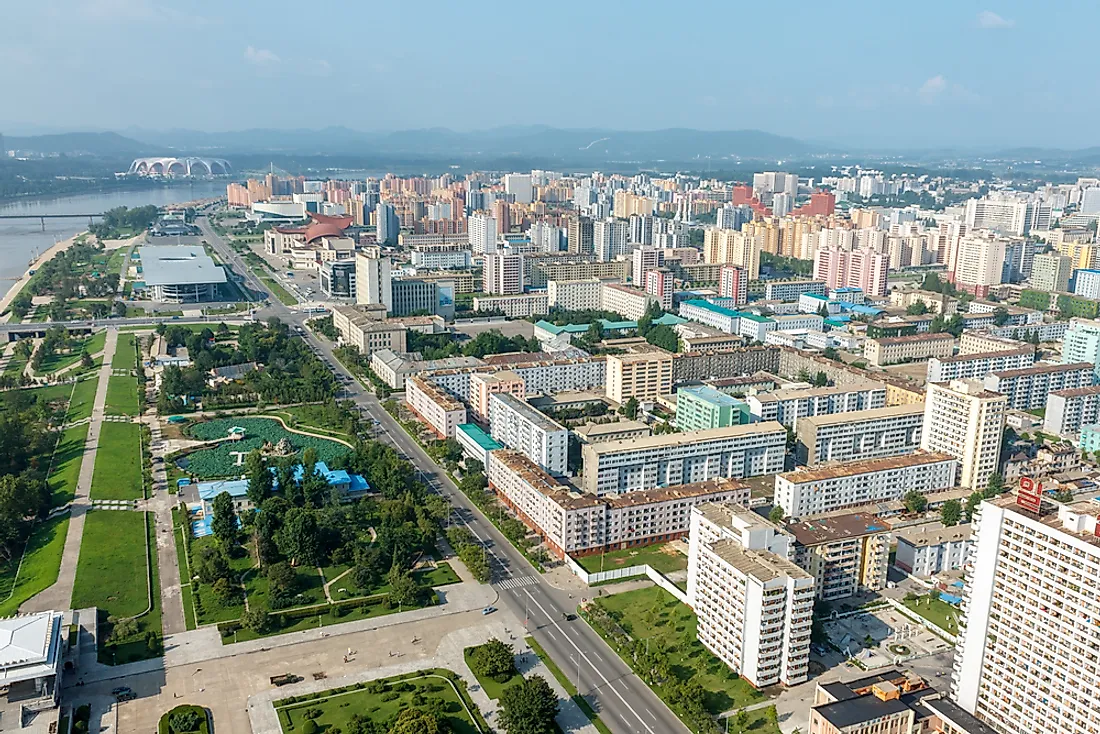What is the Capital of North Korea?

The Democratic People’s Republic of Korea occupies the northern part of the Korean peninsula in Eastern Asia. Pyongyang (flat land) is the administrative capital and the largest city in North Korea. Korean mythology claims that the city was founded in 112 BCE by remnants of the Chinese dynasty on the site that was the capital of the heavenly King Dangun. The grave of the Chinese sage, Kija, who founded the city, lies in the northern part of Pyongyang. The city lies in the west-central part of the country along the Taedong River, 30 miles from the Korean Bay. Since its establishment, Pyongyang has undergone various transformations characterized by invasions, destruction, and reconstruction to become one of the largest cities in East Asia.
History of Pyongyang
Pyongyang’s history dates back to 108 BCE when it was established as a trading colony by the Chinese. In 407 BCE, it became the capital of the Koguryo kingdom before being captured by Chinese invaders in 668 BCE. The city remained a trading capital until 1592 when it was captured by the Japanese. In the early 17th century, the Manchu took over the city exercising power until the late 18th century when Korea opened its doors to foreigners. In 1880, Christian missionaries settled in the city naming it the Jerusalem of the East as Christianity was embraced. In the late 19th century, the city was destroyed in the Sino-Japanese War and plague leaving it deserted. It was then rebuilt in the mid-20th century with the help of the Soviet Union and China as an industrial center that later expanded to become North Korea’s administrative city in 1953.
Pyongyang Today
The modern Pyongyang city is marked by a legendary bronze statue of Chollima, a winged Korean horse, which dominates the city’s skyline as a reminder to the citizens of the economic progress made after the end of the Korean War. Current landmarks in the city include the Grand Theatre and the Okryu Hall containing a monumental ceremonial hall for official functions and recreation amenities for the residents.
The industrial infrastructure in and around Pyongyang is some of the most highly developed in Asia. The infrastructural development is promoted by the availability of coal, iron, and limestone found in the outskirts of the city. As North Korea’s hub of transportation, Pyongyang commands a high density of air, rail, and road networks. Interregional highways and expressways to Nampo, Wonsan, and Kaesong originate from the city. Subways, buses, and trolley systems are used as the primary means of transport in Pyongyang.
Subsistent farming takes place in the outskirts of the city where rice, corn, and fresh produce are grown to supplement the city’s demand for food. Moreover, efforts are being made around the city to ensure self-sufficiency in regards to meat production where chicken and hogs are raised in high-density facilities.
Since North Korea opened its doors to the outside, thousands of tourists flock in Pyongyang to view the blend on antique and modern designs incorporated in towers and statutes glorifying Kim Il-sung, Kim Jong-il, and the Juche philosophy.











